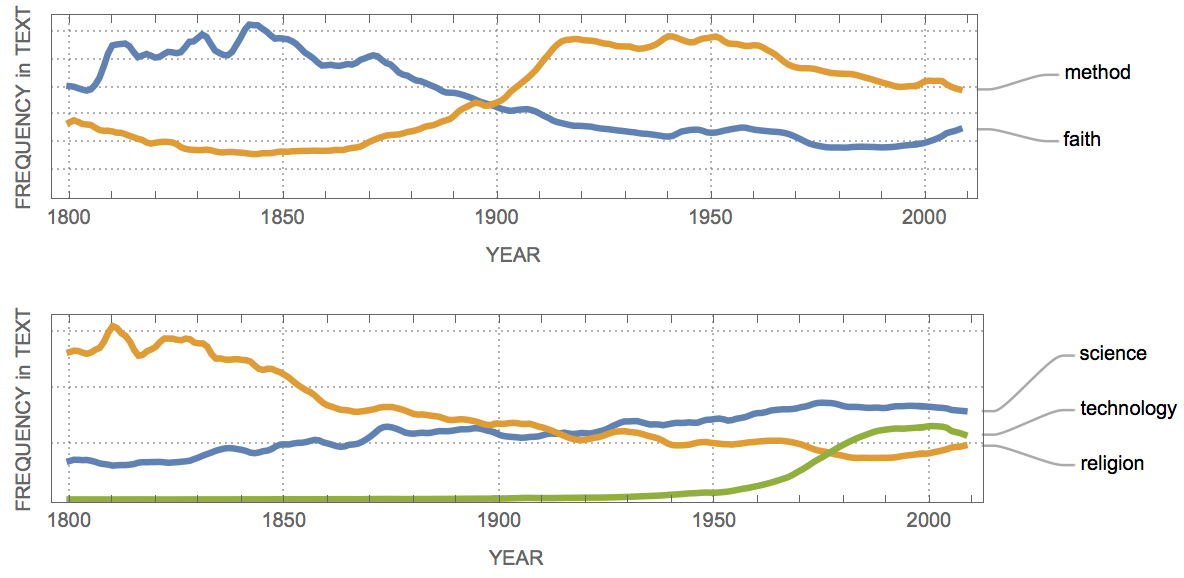NOTE: This is a long page with many images. Scroll through to find some gems.

WordFrequencyData is a nifty instrument for mining oceans of texts and discovering wonderful historical semantic curiosities. This post is a call for you to share your discoveries of interesting word histories. Rules are very simple.
Post you discovery as a comment on this thread
Your discovery should be curious histories of some words that can be seen in their WordFrequencyData
Start your comment with a title clearly indicating the meaning of your discovery (use # as the first character to make a title)
Your comment must contain a plot WordFrequencyData of your terms. You can use the function I provide below. Alternatively you can use your own what to visualize WordFrequencyData.
Your comment must contain Wolfram Language code you use to make the plot
Your comment must contain some text explaining why you think the words you found are curious and interesting in your opinion
If you want to comment on someone's work please click REPLY to his/her specific post so it is clear to what you refer and nested structure of comments is preserved.
Please see comment below for good examples.
FUNCTION for PLOTs
Feel free to use this function for your visualizations and change or improve it if you wish. Note what kind of options you can provide to this plot. I tried to limit those options to only very important once, fixing other options to make a nice plot.
ClearAll@WordFrequencyPlot;
Options[WordFrequencyPlot]=
{"YearStart"->1800,"YearEnd"->Now,"Case"->True,
"Smooth"->3,"Scaling"->None,"Style"->Automatic};
WordFrequencyPlot[words_,OptionsPattern[]]:=
With[{
$data=WordFrequencyData[words,"TimeSeries",
{OptionValue["YearStart"],OptionValue["YearEnd"]},
IgnoreCase->OptionValue["Case"]]},
DateListPlot[
MapThread[Callout,
{MeanFilter[#,Quantity[OptionValue["Smooth"],"Years"]]&/@
Values[$data],words}],
ScalingFunctions->OptionValue["Scaling"],
PlotRange->All,
PlotTheme->"Detailed",
PlotStyle->OptionValue["Style"],
FrameTicks->{Automatic,None},
ImageSize->Large,
FrameLabel->{"YEAR","FREQUENCY in TEXT"}]
]